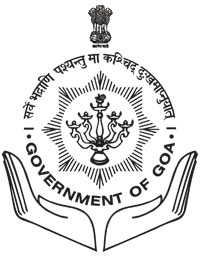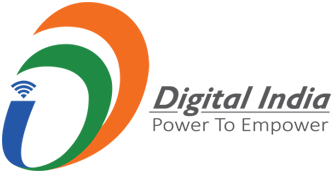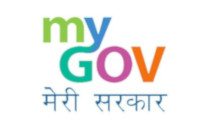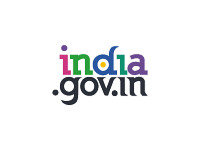- गोवा सरकारGovernment Of Goa
- स्वास्थ्य एवं परिवार कल्याण मंत्रालयMINISTRY OF HEALTH AND FAMILY WELFARE

- State Family Welfare Bureau
- National Vector Borne Disease Control programme
- National Leprosy Eradication Programme
- National Tuberculosis Elimination Programme
- Integrated Disease Surveillance Programme
- Non Communicable Disease Cell
- Health & Wellness Centre
- NIDD Control Program
- Goa State AIDS Control Society/ STD Control Program
- Swach Bharat
- National Oral Health
- Ayushman Bharat
- National immunization programme
- Health rabies control programme
- NPCDCS
- Pradhanmantri National Dialysis Programme
Immunization Programme in India was introduced in 1978 as ‘Expanded Programme of Immunization’ (EPI) by the Ministry of Health and Family Welfare, Government of India. In 1985, the programme was modified as ‘Universal Immunization Programme’ (UIP) to be implemented in phased manner to cover all districts in the country by 1989-90 with the one of largest health programme in the world.
Ministry of Health and Family Welfare, Government of India provides several vaccines to infants, children and pregnant women through the Universal Immunisation Programme.
About immunization
Immunization is the process whereby a person is made immune or resistant to an infectious disease, typically by the administration of a vaccine. Vaccines are substances that stimulate the body’s own immune system to protect the person against subsequent infection or disease.
Vaccines provided under UIP:
BCG
- About-BCG stands for Bacillus Calmette-Guerin vaccine. It is given to infants to protect them from tubercular meningitis and disseminated TB.
- When to give – BCG vaccine is given at birth or as early as possible till 1year of
- Route and site- BCG is given as intradermal injection in left upper arm.
OPV
- About-OPV stands for Oral Polio Vaccine. It protects children from poliomylitis.
- When to give- OPV is given at birth called zero dose and three doses are given at 6, 10 and 14 weeks. A booster dose is given at 16-24 months of age.
- Route and site – OPV is given orally in the form of two drops.
Hepatitis B vaccine
- About – Hepatitis B vaccine protects from Hepatitis B virus infection.
- When to give- Hepatitis B vaccine is given at birth or as early as possible within 24 hours. Subsequently 3 dose are given at 6, 10 and 14 weeks in combination with DPT and Hib in the form of pentavalent vaccine.
- Route and site- Intramuscular injection is given at anterolateral side of mid thigh
Pentavalent Vaccine
- About-Pentavalent vaccine is a combined vaccine to protect children from five diseases Diptheria, Tetanus, Pertusis, Haemophilis influenza type b infection and Hepatitis B.
- When to give – Three doses are given at 6, 10 and 14 weeks of age (can be given till one year of age).
- Route and site-Pentavalent vaccine is given intramuscularly on anterolateral side of mid thigh
Rotavirus Vaccine
- About -RVV stands for Rotavirus vaccine. It gives protection to infants and children against rotavirus diarrhoea. It is given in select states.
- When to give – Three doses of vaccine are given at 6, 10, 14 weeks of age (can be given at one year of age).
- Route and site-5 drops of liquid vaccine or 2.5 ml (lyophilized vaccine) are given orally.
PCV
- About- PCV stands for Pneumococcal Conjugate Vaccine. It protects infants and young children against disease caused by the bacterium Streptococcus pneumoniae.
- When to give – The vaccine is given as two primary doses at 6 & 14 weeks of age followed by a booster dose at 9-12 months of age
- Route and site- PCV is given as intramuscular (IM) injection in antero-lateral side of mid- thigh. It should be noted that pentavalent vaccine and PCV are given as two separate injections into opposite thighs.
fIPV
- About– fIPV stands for Fractional Inactivated Poliomylitis Vaccine. It is used to boost the protection against poliomylitis.
- When to give- Two fractional doses of IVP are given intradermally at 6 and 14 weeks of age.
- Route and site- It is given as intradermal injection at right upper arm.
Measles/ MR vaccine
- About-Measles vaccine is used to protect children from measles. In few states Measles and Rubella a combined vaccine is given to protect from Measles and Rubella infection.
- When to give-First dose of Measles or MR vaccine is given at 9 completed months to12 months (vaccine can be given up to 5 years if not given at 9-12 months age) and second dose is given at 16-24 months.
- Route and site – Measles Vaccine is given as subcutaneous injection in right upper arm.
JE vaccine
- About- JE stands for Japanese encephalitis vaccine. It gives protection against Japanese Encephalitis disease. JE vaccine is given in select districts endemic for JE after the campaign.
- When to given- JE vaccine is given in two doses first dose is given at 9 completed months-12 months of age and second dose at 16-24 months of age.
- Route and site- Live attenuated vaccine is given as subcutaneous injection in left upper arm and killed vaccine is given as intramuscular injection in anterolateral aspect of mid- thigh.
DPT booster
- About-DPT is a combined vaccine; it protects children from Diphtheria, Tetanus and Pertussis.
- When to give -DPT vaccine is given at 16-24 months of age is called as DPT first booster and DPT 2nd booster is given at 5-6 years of age.
- Route and site- DPT first booster is given as intramuscular injection in antero-lateral side of mid-thigh in left leg. DPT second booster is given as intramuscular injection in left upper arm.
Tetanus and adult diphtheria (Td) vaccine:
- About-TT vaccine has been replaced with Td vaccine in UIP to limit the waning immunity against diphtheria in older age groups.
- When to give- Td vaccine is administered to adolescents at 10 and 16 years of age and to pregnant women.
- Pregnant women- Td-1 is given early in pregnancy as first dose and 4 weeks after Td1, second dose of Td as Td-2 is given. Td- Booster is given, if pregnant woman has received 2 TT/Td doses in a pregnancy within the last 3 years.* Intra-muscular Upper Arm
- Route and site- Td is given as intramuscular injection in upper arm.
New Initiatives in Vaccine Logistics & Cold Chain Management
- Capacity building
- National Cold Chain Training Centre (NCCTE), Pune and National Cold Chain & Vaccine Management Resource Centre (NCCVMRC) -NIHFW, New Delhi have been established to provide technical training to cold chain technicians in repair & maintenance of cold chain equipment
- System strengthening
- Electronic Vaccine Intelligence Network (eVIN) rollout:
- The Government of India has rolled out an Electronic Vaccine Intelligence Network (eVIN)system that digitizes the entire vaccine stock management, their logistics and temperature tracking at all levels of vaccine storage – from national to the sub-district.
- This enables program managers to have real time view of the vaccine stock position and their storage temperature across all the cold chain points providing a detailed overview of the vaccine cold chain logistics system across the entire country.
- eVIN system has been completed in 12 states in the first phase – Assam, Bihar, Chhattisgarh, Himachal Pradesh Gujarat, Jharkhand, Madhya Pradesh, Manipur, Nagaland, Odisha, Rajasthan, and Uttar Pradesh.
- Second phase is ongoing in 9 states – Andhra Pradesh, Daman & Diu, Dadra & Nagar Haveli, Goa, Karnataka, Maharashtra, Telangana, Tripura and Uttarakhand.
- eVIN is to be scaled up to entire country.
- National Cold Chain Management Information System (NCCMIS)to track the cold chain equipment inventory, availability and functionality.
For more detail click : https://nhm.gov[dot]in/index1.php?lang=1&level=2&sublinkid=824&lid=220
Subscribe to our
Newsletter
***We Promise, no spam!









